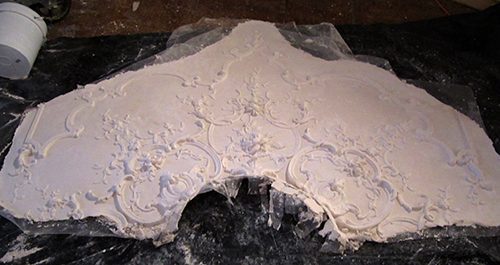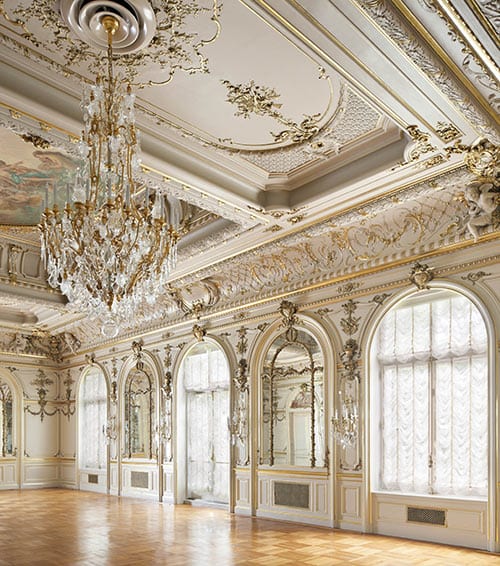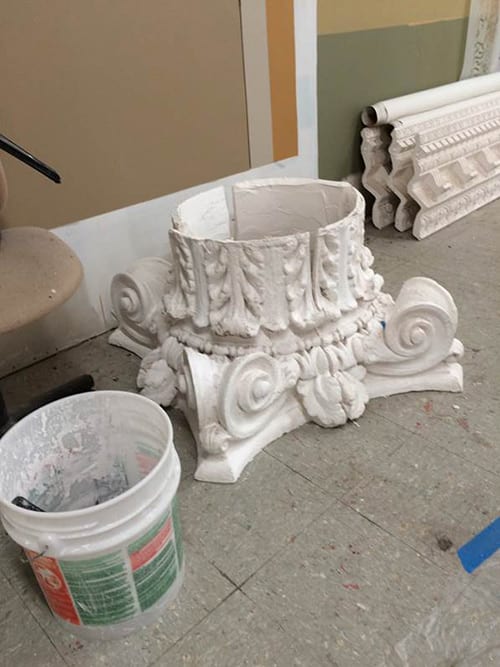Using Urethane Rubber Molds to Restore Historic Plasterwork


Urethane-based rubber molds have become an extremely important part of plaster restoration over the past several decades.
New advances in rubber and polymer mediums has helped to propel urethane molds use as a malleable tool for intricate design casting. The increased ability of plasterers to not only quickly produce molds on a job site, but also make quick impressions for later duplication has enabled ornamental plaster repair to reach new heights (literally).


Much of the ornamental plaster work we think of exists high up, on the ceiling or in the form of decorative moldings and cornices around a room. Prior to flexible impressions being made quickly and easily in place, sections of the ceiling design, or wall trim, would have to be removed in order for an impression to be made. Urethane rubber molds can quickly and easily be used to convert in-place designs into base impression casts, or can help convert freed original ornaments into negative molds, ready for wet plaster.
As previously mentioned, the flexibility and quick nature of making a urethane mold has helped them to become a standard tool in a restoration professional’s arsenal. Crafted from high grade flexible rubber, urethane molds are simply made and can be reused repeatedly, if crafted properly. Perfect for low-volume use, their pliable nature enables complex, three-dimensional designs to be cast and removed with minimal fear of damage to the finished plaster.
Unlike hard silicone, metal, or historic wood molds (which are well-suited to high-volume production) urethane can allow medallions and rosettes with inverted designs to pop-out. Moreover, urethane molds have become especially useful for partial castings of damaged ornamental plaster.
Fortunately, the ease of urethane makes them a forgiving partner on the job site. Quickly, molds crafted on site can be operational in a matter of hours (or less depending on the urethane medium used). This quick turn-around and high level of accuracy makes them well-suited to their low-volume, high-mix application on the job site, or in the work room.
Producing an accurate mold is imperative to the success of the restoration. Careful attention to size, shape, spacing, impression depth, angle, and placement of motif should be top priority of a plasterer when crafting molds. Failure to carefully account for the design will result in a deficient end product.






